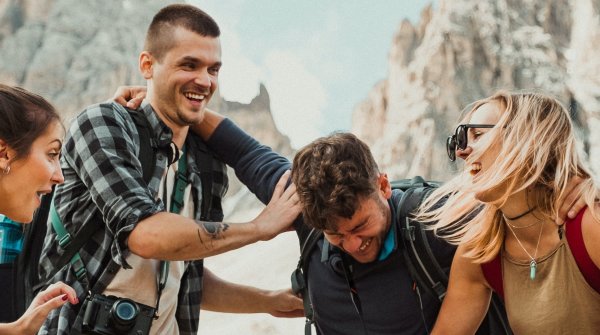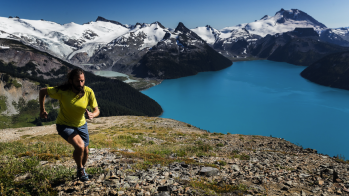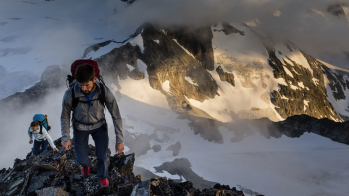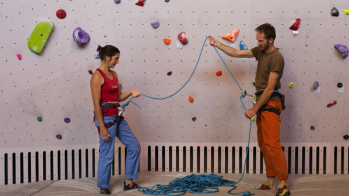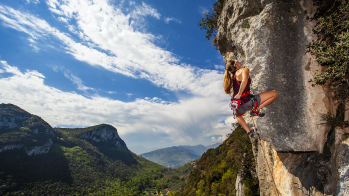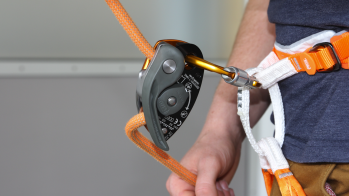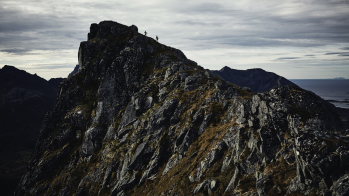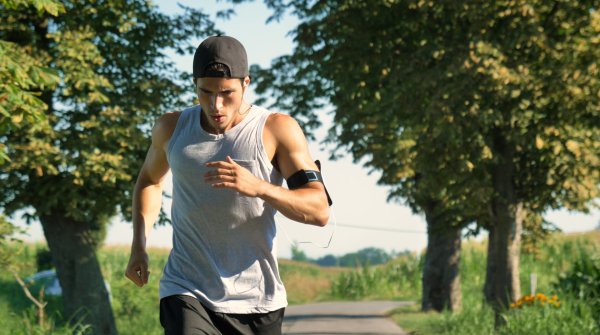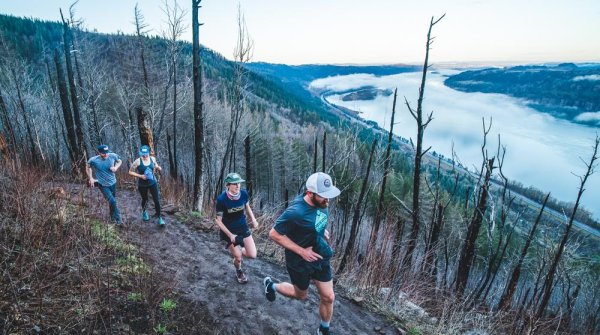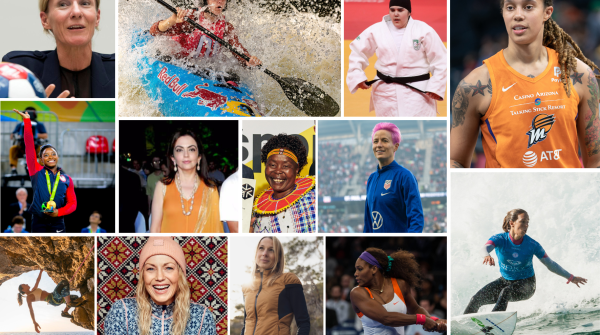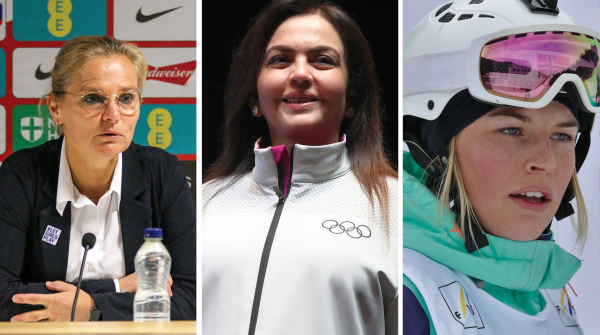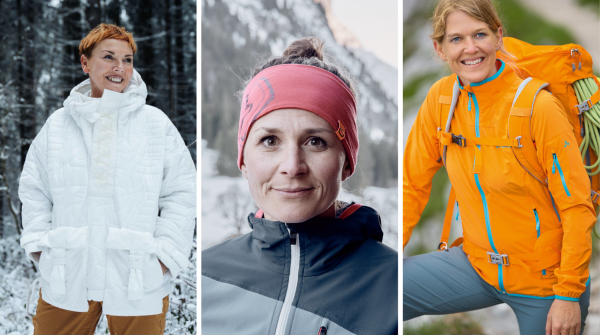
Karl Egloff, the Swiss-Ecuadorian, learned about Kilian Jornet through Google. That was in 2013, when the world of running and mountain sports already knew Jornet from books and films. Egloff, however, just appeared out of nowhere in the trail and skyrunning scene and promptly broke the Catalan’s speed record on Kilimanjaro in 2014. The following year, he also took Jornet’s speed record on Aconcagua, the highest peak in South America, ran on the Elbrus in record time in 2017 and finally on the Denali. On America's highest mountain, he beat Jornet's record by four minutes in June 2019 and set a new best time of 11 hours 44 minutes (ascent 7 h 40 min/descent 4 h 04 min).
Two skyrunners at eye level, you might think, but so different in their media perception and their success with sponsors. ISPO.com met with both. The top runners explain what they love about their sport, trail running in the broadest sense, and skyrunning in the narrower sense.
There are many ways to move quickly on foot in the mountains: trail running, skyrunning, speed hiking, speed climbing. If you ask Kilian Jornet for a definition of his sport, he isn’t able to give a clear answer. “All I know is that I like to travel fast in the mountains,” he says. “Finding a name for it makes it complicated.”
Trail running is a relatively young sport. There’s still a lot going on. Styles and trends adapt to each other. The boundaries between mountain running and mountaineering sometimes become blurred. “That’s the beauty of it,” says Jornet.
The Swiss-Ecuadorian Karl Egloff, on the other hand, calls himself a skyrunner. “This is a combination of trail running, speed climbing and mountaineering.” And he also has a definition ready: Skyrunning is a ride up to the summit and down again, with the route at a height where the terrain has everything that the high mountains have to offer: glaciers, boulders, and exposure.
A skyrunner is fast, good with heights, and experienced enough to move quickly on the mountain, says Egloff. “Many mountain climbers are extremely acclimatized, but they can’t run fast.”
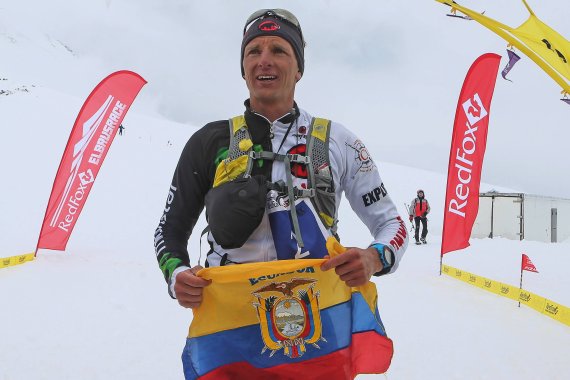
Mr. Jornet, let’s take two examples: What is the difference for you between a triumph at the ultra marathon Ultra-Trail du Mont-Blanc (leading the Montblanc group and having a length of about 170 km at about 10,000 meters in altitude), which you won three times, and the victory at the Ring of Steall Skyrace (29 km, 2,500 meters)?
Kilian Jornet: They’re two completely different races. The UTMB is about long distances, which requires a completely different strategy and tactics than races that are shorter and more technically demanding. But for me every victory is worth the same, because it means that you did your best. That’s precisely what interests me: the versatility of this sport. That way I can test myself in very different ways during a season.
This year you participated in the Golden Trail Series (overview at the end of the article) , a competition series of five different races, which had its premiere this season. What sets these competitions apart?
The Golden Trail Series links the world’s most mythical trail runs, where the world’s best runners come together. In these races I can face the strongest competitors on especially beautiful courses, be it because of the great atmosphere you experience in Zegama or the speed in Sierre-Zinal.
Mr. Egloff, you also took part in a race in the Golden Trail Series with Pikes Peak 2018. What races are you interested in for the coming year?
Karl Egloff: If everything goes well and I have the budget, next year I’m going to run all five races in the series.
You hold the speed records for three of the Seven Summits: Kilimanjaro (2014), Aconcagua (2015), and Mount Elbrus (2017). In doing so, you’ve broken two of Kilian Jornet’s records. But only few people in Europe know about you. Why is that?
I live and train in Ecuador, my homeland. But the headlines are printed in Europe. That’s where the money is, the sponsors, the media. The scene in South America has grown like no other sport. Many Ecuadorians followed the UTMB live throughout the night. They stayed extra awake and watched individual runners via GPS. Every weekend we have trail running events in short and long distances, verticals, and skyrunning competitions. The big difference is: The good ones don’t stay, they try their luck in Europe.

Why aren’t you among them?
I’m at the point now. I’ve been undefeated in South America for four years. Now I want to tackle the rest of the Seven Summits. The Carstensz Pyramid, Mount Vinson, and Mount Everest are very expensive mountains. I have to make sure people hear about me and I find good sponsors.
How do you want to go about doing that?
By successfully running the Golden Trail Series. Only if I take a really serious beating will I know where I’m lacking. That’s why I travelled to the Pikes Peak race at short notice during the summer, to see what it’s like to run with the world’s elite. It went well. I came in seventh in the overall ranking. And I learned where I need to improve.
You were born and raised in Ecuador, but as the son of a Swiss mountain guide, you also speak German and Swiss German. Why don’t you move to Europe right away?
South America is a paradise for training. I have the perfect training conditions for my project here. I can get in my car, drive one hour away from my house, and start training at 5,000 meters. They don’t have that anywhere in Europe.
You actually used to be a professional mountain biker. Why did you start hitting the trail on foot?
I achieved everything that was possible as a mountain biker in Ecuador, won every race. And to make money doing it, I would have had to leave Ecuador. I didn’t want to do that. Then I founded my agency, Cumbre Tours. I’ve been working as a mountain guide since I was 15.
And how did you end up in the trail running scene?
I’ve actually always done it. I grew up that way on the Cotopaxi: first climb up to the summit, then run another lap. I led a tour to Mount Kilimanjaro for a Swiss agency in 2012. I guided the customers from hut to hut, and went running every day. Word got around that there was some lunatic running up the summit, eating down with the customers, and then going back up to the summit with them.
Back in Switzerland, the head of the agency said, ‘Come on, let’s set the record for Kili.’ He told me that a guy by the name of Kilian Jornet held the record. I googled him and thought, ‘Geez, a world-class athlete with book deals and films and all that. I just can’t win against that.’ But I was 32 minutes faster.
When did you get to meet Kilian?
We met in Chamonix and shot a film for Suunto together. Afterwards, we were together on Mont Blanc. I got to know Kilian as a very humble person. And he has a very interesting history.
Climbing, trail running and hiking: the whole variety of mountain sports
Mr. Jornet, Karl Egloff masterfully undercut two of your records – but hardly anyone is interested. Why?
Kilian Jornet: To be honest, I don’t know. I think very highly of Karl – as an athlete and as a person. He’s very strong, multifaceted, and tenacious. I’m confident that he still has a lot more he’s going to achieve.
How do you explain the fact that you’ve experienced so much more fame compared to other top athletes? Do you do a better job marketing yourself and your achievements?
I don’t know how the others do it. It just gives me joy going into the mountains, telling people about it, but also staying as true as possible to my understanding of the mountains and of life. I operate my social media channels personally, and without any firm planning. I see it as a way to report on my life day after day. I have a team that takes care of things like video editing. But we make sure to exercise restraint when we do, so it stays interesting for our followers.
Karl, when it comes to name recognition, why is Kilian’s name so present compared to all the other top athletes?
Karl Egloff: Kilian doesn’t just have a top team. He was the first, a pioneer in this sport. Besides that, he’s always able to deliver good material that he can use to regularly feed social media.
Are social networks the key – besides athletic achievements – to financial success today?
That is unfortunately the case these days. No less important than a world championship title itself is the ability to sell it. Both need to add up, success and marketing. You’ll lose a lot of time working on it, but that’s part of the job. There are days when it gets frustrating. But if you neglect it, the train will leave the station without you.
The Golden Trail Series was first staged in 2018 and consists of five races selected for their special atmosphere, landscape, or difficulty:
- Zegama, Spain: Known for the particularly passionate atmosphere the Basque valley spreads for this sport. (42 km, 2,736 meters in altitude, max. 500 participants)
- Mont Blanc Marathon, Chamonix, France: Known as “the Roller Coaster,” with Mont Blanc as a unique backdrop (42 km, 2,780 meters in altitude)
- Sierre-Zinal, Switzerland: The fastest race in the series (31 km, 2,200 meters in altitude)
- Pikes Peak, USA: The highest race in the series, with a summit at 4,302 meters (42.18 km, 2,382 meters in altitude)
- Ring of Steall Skyrace, Scotland: The most technically demanding race (29 km, 2,382 meters in altitude)
In the finals, which are held in a different place every year, only the ten best men and women to have qualified in the five races compete against one another. And they run for a good cause.
Due to an injury in the winter, Kilian Jornet was late getting involved in the Golden Trail Series at the Mont Blanc Marathon, and despite his long break from training, surprisingly won all three races in which he participated (Mont Blanc Marathon, Sierre-Zinal, and Ring of Steall) in a row. He thus qualified for the final round, the Otter Trail in South Africa, but there had to back out due to hip problems, taking third place in the overall competition series.
- Awards
- Mountain sports
- Bike
- Fitness
- Health
- ISPO Munich
- Running
- Brands
- Sustainability
- Olympia
- OutDoor
- Promotion
- Sports Business
- Textrends
- Triathlon
- Water sports
- Winter sports
- eSports
- SportsTech
- OutDoor by ISPO
- Heroes
- Transformation
- Sport Fashion
- Urban Culture
- Challenges of a CEO
- Trade fairs
- Sports
- Find the Balance
- Product reviews
- Newsletter Exclusive Area
- Magazine


